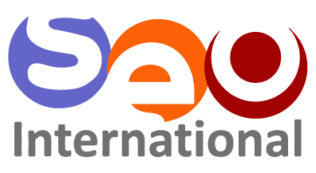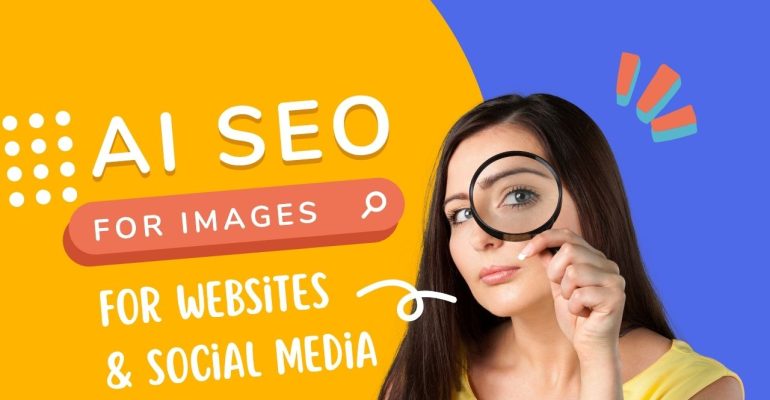Image SEO Naming Convention and Best Practices for Websites and Social Media
Why Image SEO Matters More Than Ever
You’ve built a stunning website, uploaded crisp visuals, and shared them across Instagram and LinkedIn — but your pages still don’t rank. Chances are, your images look great to people but invisible to search engines.
That’s where Image SEO comes in. It’s not about filters or aesthetics; it’s about helping Google, Bing, and even AI models understand what your visuals mean. The right naming, formatting, and metadata can boost visibility, page load speed, and even conversions.
According to Google’s Image SEO Guidelines, search engines rely heavily on image context — not just the image itself — to decide where and how your visuals should appear in results and AI overviews.
Name Your Images Like Google Can Read Them
Think of a file name as an image’s identity card. Instead of uploading files like:
❌ IMG_1234.jpg or final-v3.png
Go for descriptive, keyword-rich names that make sense to both humans and search engines:
✅ digital-marketing-training-dubai-seointernational.webp
✅ ai-course-google-meet-workshop-uae.webp
According to RankMath, lowercase descriptive file names using dashes are ideal. Avoid stop words like “the” or “and.”
Pro Tip: If a page has multiple visuals, make each filename unique but related:
- digital-marketing-course-dubai-classroom.webp
- digital-marketing-course-dubai-online.webp
- digital-marketing-course-dubai-one-on-one.webp
Also, Google recommends using logical, persistent URLs for image folders — for example, /images/training/digital-marketing/ — because it helps search engines understand category and context. Avoid renaming or moving image URLs frequently, and if you must, use 301 redirects to preserve SEO value.
Write ALT Text That Makes Sense to Humans (and Google)
ALT text describes what’s in an image — vital for both accessibility and SEO.
Example:
alt=”Trainer explaining AI marketing strategy during SEO course in Dubai”
Backlinko emphasizes that ALT text should describe the purpose of the image, not just its content. For example, if your image is a button, ALT text like “Download AI Course Brochure” works better than “Blue button.”
Google also stresses that good ALT text improves visibility in Image Search and AI Overview results, helping your visuals appear in richer contexts.
Add Context Where It Matters Most
Images shouldn’t live in isolation — their placement and surroundings matter.
According to Google Developers:
- Place images near relevant text and ideally include captions.
- Use clear page titles and headings that reflect what the visuals represent.
- Position your most important images near the top of the page.
This helps Google connect visual and textual relevance. For example, if your image shows a “digital marketing class,” mention that phrase naturally in your heading or nearby paragraph.
Keep Your Images Sharp, Light, and Fast
Speed and quality are equally important. High-quality images attract attention, while lightweight files improve user experience and rankings.
Formats that work:
- WebP: 25–35% smaller than JPEG or PNG.
- AVIF: Ideal for HD visuals, sharper and even smaller in size.
Compression tools:
TinyPNG, Squoosh, or Compressor.io.
Load speed optimization:
Use lazy loading to delay non-visible images until the user scrolls.
Mobile-first design:
Most image searches happen on mobile, so use responsive images (srcset) to serve appropriate resolutions for every device.
Yoast also recommends specifying image width and height attributes — this prevents layout shifts, which are part of Google’s Core Web Vitals metrics.
Don’t Embed Important Text in Images
Avoid adding critical content (like page titles, menus, or service details) inside images. Google can’t reliably read text within visuals, and neither can assistive technologies. Instead, keep key text as HTML.
If you need to include words in a visual (for example, a promotional banner), repeat that text in the caption or body content for SEO and accessibility.
Don’t Forget Social Media Images
SEO isn’t just about websites — it’s about visibility everywhere. Social media platforms like Instagram, LinkedIn, Pinterest, and X (Twitter) all use AI-driven visual recognition.
Yoast explains that optimized social images improve click-through rates and brand recall. You can control how your content appears when shared by editing your Open Graph (OG) tags.
Tips for social visuals:
- Rename before upload (dubai-social-media-marketing-workshop.webp).
- Use descriptive captions or platform-specific ALT text.
- Maintain recommended image sizes (Instagram 1080×1080, LinkedIn 1200×627).
- Create visually clear, branded designs with readable text and contrast — as suggested by Yoast’s social image guide.
Let AI Do the Heavy Lifting
Managing hundreds of visuals? Let AI help.
Prompt Example:
“Rename these 20 image files for SEO. Include the keyword ‘AI Courses,’ location ‘Dubai,’ and use dashes instead of underscores.”
ChatGPT and other AI tools can instantly generate SEO-friendly file names and ALT text. Platforms like Cloudinary, ImageKit, and Adobe Firefly can automatically convert formats, resize images, and compress files to improve site speed.
Add Structured Data and Licensing Info
To make your images eligible for enhanced search results, add structured data where relevant. For example, Product, Recipe, and NewsArticle schemas can make your images appear with rich snippets.
According to Google, adding image licensing information through structured data or metadata also helps users understand whether your visuals are available for reuse or licensing, which builds trust and transparency.
A Simple Formula That Works Everywhere
When naming images, follow this easy structure:
Service/Product + Keyword + Location + Variation
digital-marketing-training-dubai-classroom.webp
digital-marketing-training-dubai-online.webp
digital-marketing-training-dubai-one-on-one.webp
For e-commerce:
women-leather-bag-black.webp
women-leather-bag-brown.webp
women-leather-bag-crossbody.webp
Consistent naming and folder structure make your site easier to manage and help Google associate related visuals.
Keep an Eye on Robots.txt and Analytics
If your image URLs are blocked by robots.txt, they won’t appear in Google Image Search — even if your SEO is perfect. Double-check your configuration to ensure images aren’t accidentally excluded.
Then, use Google Search Console to:
- Monitor which images drive the most impressions and clicks.
- Check structured data validation.
- Measure page load speed and mobile responsiveness.
Google recommends starting with a small sample of pages to identify image-related issues — then scaling improvements sitewide.
Insight Hub
Over 20 percent of all Google searches happen in Google Images, and optimized visuals increase organic click-through rates by 26 percent or more. Well-structured ALT text and image context improve appearance in Google Discover and AI Overviews, while websites with compressed, responsive images load up to 30 percent faster, improving user retention and ranking. In a visual-first market like Dubai, image SEO is no longer optional — it’s a vital part of every digital strategy.
Your Next Move – From Uploading to Optimizing
Before you upload your next photo, pause. Rename it properly, add a descriptive ALT text, compress it efficiently, and place it where it makes sense contextually. Every image on your site is an opportunity to show up in visual search, social feeds, and even AI-driven recommendations.
To learn how to integrate AI tools, SEO best practices, and local optimization into your full marketing strategy, explore SEO International’s beginner-friendly AI and Digital Marketing Courses in Dubai. Join group sessions at JW Marriott Hotel Dubai Marina, attend in-house corporate workshops, or book private 1:1 Google Meet coaching — all designed to help you grow with practical, hands-on skills.
Because even your images can tell a story — if you name, tag, and optimize them right.



